About Olivine
Olivine – named in allusion to its olive-green color. Fayalite – locality on Fayal Island in the Azores where it was believed to have occurred in a local volcanic rock; it was probably obtained from slag carried as ship’s ballast. Forsterite – for Adolarius Jacob Forster (1739-1806), English mineral collector and dealer, who spent considerable time in St. Petersburg, Russia.
Olivine hand-specimen
Formula: (Mg,Fe)2SiO4
System: Orthorhombic
Color: Yellowish green, olive, etc.
Lustre: Vitreous
Hardness: 6½–7
Density: 3.2
System: Orthorhombic
Color: Yellowish green, olive, etc.
Lustre: Vitreous
Hardness: 6½–7
Density: 3.2
Olivine PPL properties
Relief: Very High – High positive
Habit/Form: In most metamorphic and intrusive igneous rocks, olivine tends to form subequant, anhedral grains or aggregates of grains. Euhedral crystals are more common in volcanic rocks and sections usually are equidimensional, or slighly elongate parallel to c with six or eight sides.
Color: Colorless (Forsterite or Mg-member) to pale yellow, yellow-orange, reddish brown (in the case of Fayalite, Fe-member)
Pleochroism: Absent; Fayalite (Fe-member) can show weak-moderate pleochroism (orange yellow to reddish brown color).
Cleavage: Imperfect after {010} and {110}; irregular fractures are common.
Habit/Form: In most metamorphic and intrusive igneous rocks, olivine tends to form subequant, anhedral grains or aggregates of grains. Euhedral crystals are more common in volcanic rocks and sections usually are equidimensional, or slighly elongate parallel to c with six or eight sides.
Color: Colorless (Forsterite or Mg-member) to pale yellow, yellow-orange, reddish brown (in the case of Fayalite, Fe-member)
Pleochroism: Absent; Fayalite (Fe-member) can show weak-moderate pleochroism (orange yellow to reddish brown color).
Cleavage: Imperfect after {010} and {110}; irregular fractures are common.
Olivine XPL properties
Isotropy/Anisotropy: Anisotropic
Interference color: Order II-III; bright
Extinction angle: Parallel / 0° / straight to crystal outlines and cleavage traces.
Twins: Absent
Uniaxial/Biaxial: Biaxial (+/-)
Optic axial angle (2V): Forsterite 2V measured: 74 – 90°, calculated: 56 – 84°
Fayalite 2V 134°
Interference color: Order II-III; bright
Extinction angle: Parallel / 0° / straight to crystal outlines and cleavage traces.
Twins: Absent
Uniaxial/Biaxial: Biaxial (+/-)
Optic axial angle (2V): Forsterite 2V measured: 74 – 90°, calculated: 56 – 84°
Fayalite 2V 134°
Olivine distinguishing features under the microscope
Get Geology Toolkit Premium for more features of Olivine thin section under the microscope.
References
- Deer, W. A., Howie, R. A., & Zussman, J. (2013). An introduction to the rock-forming minerals (pp. 498). Mineralogical Society of Great Britain and Ireland, London.
- mindat.org – The Mineral Database




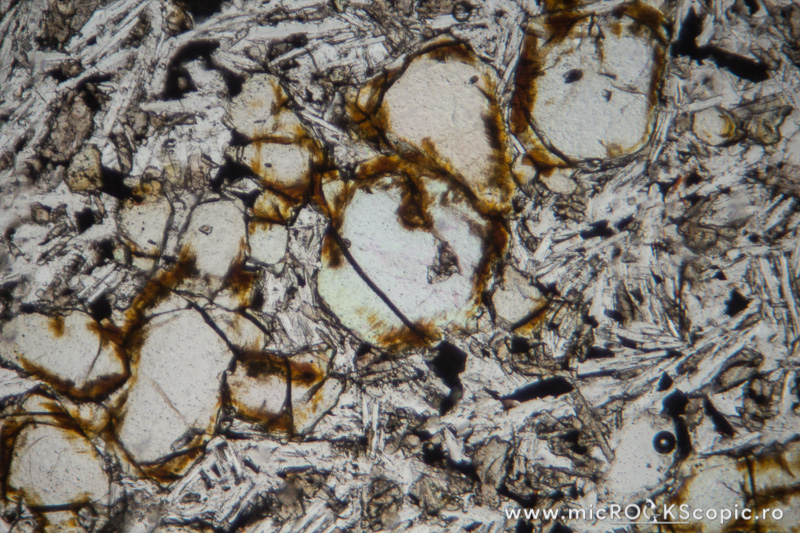




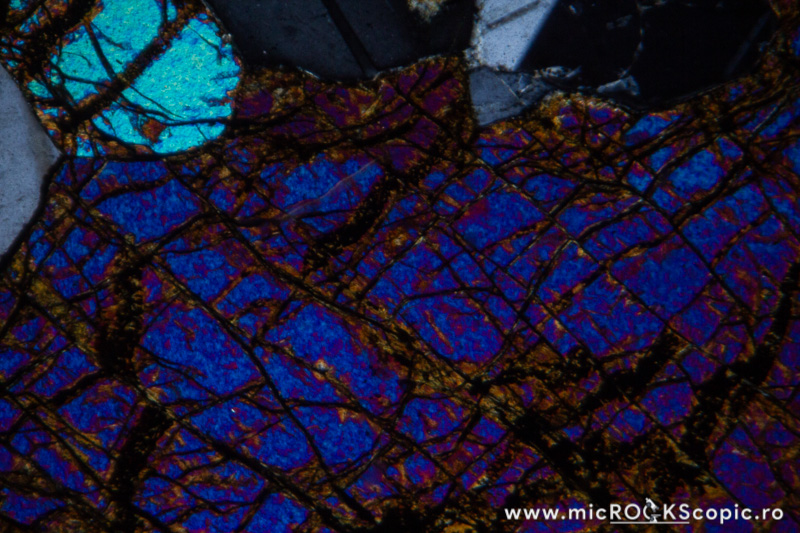


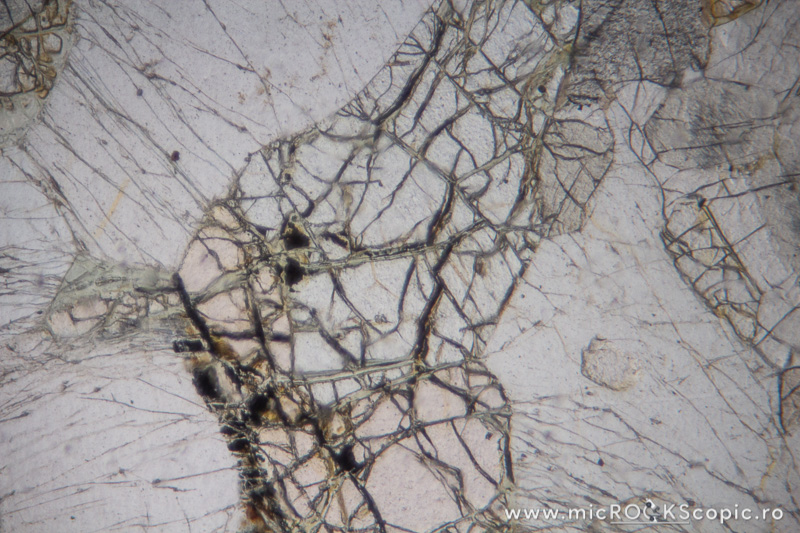
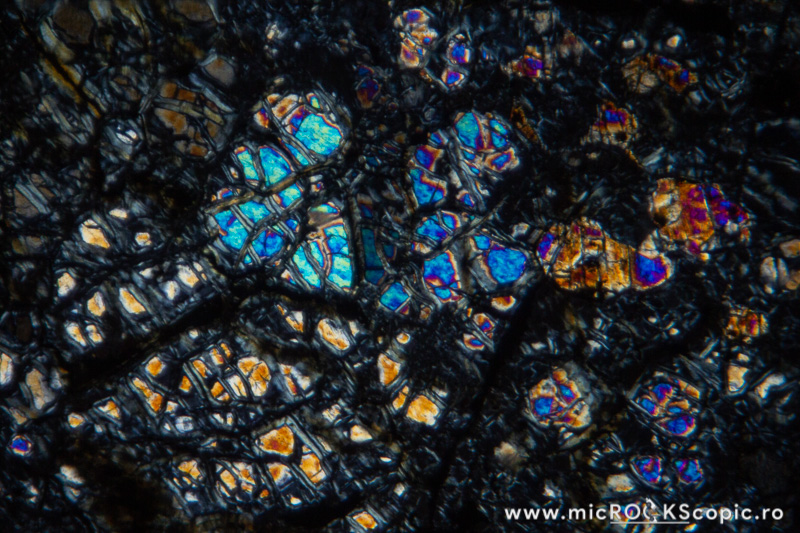

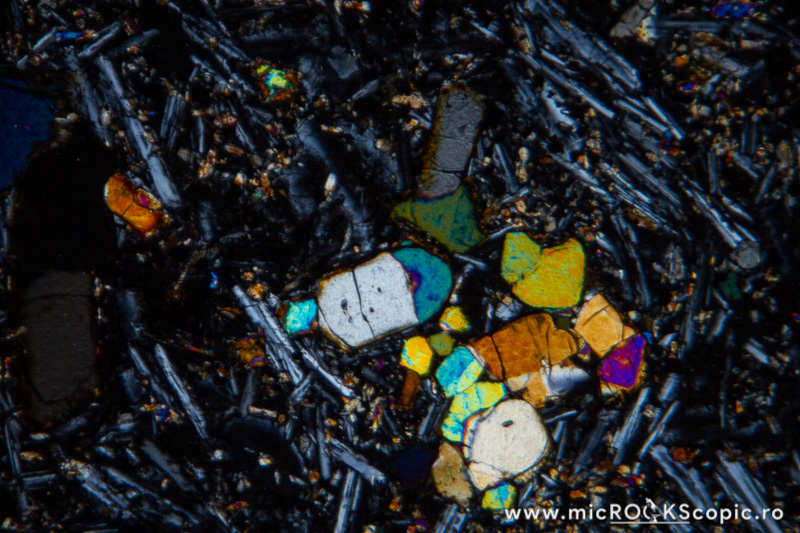

![[thumb]](http://microckscopic.ro/wp-content/uploads/olivine_2_21-1-150x150.jpg)
![[thumb]](http://microckscopic.ro/wp-content/uploads/olivine_6_02-1-150x150.jpg)
![[thumb]](http://microckscopic.ro/wp-content/uploads/olivine_04-1-150x150.jpg)
![[thumb]](http://microckscopic.ro/wp-content/uploads/olivine_27-1-150x150.jpg)
![[thumb]](http://microckscopic.ro/wp-content/uploads/olivine_1_20-1-150x150.jpg)
![[thumb]](http://microckscopic.ro/wp-content/uploads/olivine_3_06-1-150x150.jpg)
![[thumb]](http://microckscopic.ro/wp-content/uploads/olivine_8_02-1-150x150.jpg)
![[thumb]](http://microckscopic.ro/wp-content/uploads/olivine_10_13-1-150x150.jpg)






